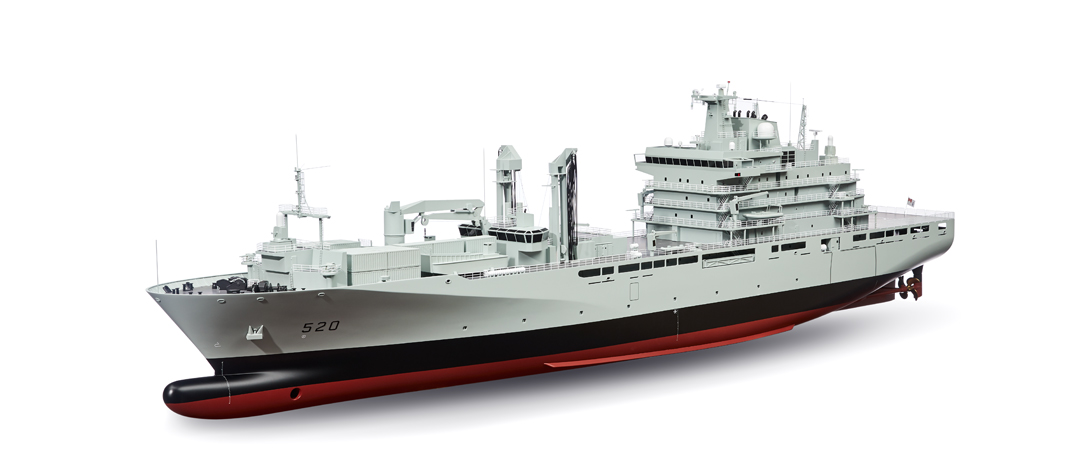On November 17, 2020, The Office of the Parliamentary Budget Officer released a report on the estimated construction costs of the Joint Support Ship program and costs of contracting converted commercial vessels MV Asterix and the Obelix to provide military support. The report, The Joint Support Ship Program, and the MV Asterix: A Fiscal Analysis, is in response to a request from the House of Commons Government Operations and Estimates Committee (OGGO).
This report compares the two projects by incorporating additional project cost elements.
According to the Abstract:
“Our independent point estimate of the construction cost is $2.4 billion, with an additional estimated $0.6 billion to account for budgetary contingency, producing a total of $3.0 billion. Accounting for the non-construction costs stated by the Department of National Defence, we estimate the total project cost of the JSS to be $4.1 billion, inclusive of provincial sales tax.”
So, the total estimated project cost of JSS is $4.1 billion according to The Office of the Parliamentary Budget Officer.
Regarding contracting the services of Asterix and Obelix, it states: “The total potential net cost of the government’s contracting of the MV Asterix is $733 million, inclusive of provincial sales tax. We project that a five-year provision of service contract of the Obelix would cost the government $801 million, inclusive of any applicable taxes.”
Since the project costs of the JSS cannot be directly compared to the costs associated with the provision of service contract of the Asterix or any potential similar contract for the Obelix, PBO opted for a comparison of the JSS project to the cost of the purchase options for the Asterix and Obelix. According to their calculations, the Asterix and Obelix could be obtained by the Government of Canada for a total of approximately $1.4 billion, as compared to their estimated $4.1 billion cost for the JSS project cost.
In response to this conclusion, a statement from the Department of National Defence states, “that there are a number of key factors that were not taken into account as they are outside the scope of the report.”
DND points out that the PBO “did not consider the capabilities of MV Asterix and MV Obelix as commercial vessels converted for military purposes versus those of the built-for-purpose Joint Support Ship.”
“MV Asterix, and the proposed MV Obelix, do not have the same capabilities as the future Joint Support Ships. The Joint Support Ships were designed to be able to deploy into harm’s way, a key element of the military design.”
Some of the capabilities that were designed into the Joint Support Ships that are not available on MV Asterix include:
- a mine-avoidance degaussing system,
- systems to detect and protect against chemical, biological, radiological, and nuclear threats,
- a dual redundant propulsion system,
- damage control capabilities that meet military standards,
- a cyber-resilient command management system,
- self-defence capabilities, including a combat management system, naval remote weapon systems, and close-in weapon systems,
- a hangar and flight deck that can support the Cyclone aircraft, and
- certified, fitted magazines to transport specialized ammunitions, such as torpedoes.
According to DND, these additional features provide survivability that is critical to ensure the safety of sailors in high-risk areas. “Purpose-built warships like the Joint Support Ships provide the best available protection for our sailors with a military design that incorporates higher damage control standards and counter-measures against threats from torpedoes, mines, or missiles.”
The statement from DND also points out that the figures in the PBO report do not include the money already spent on MV Asterix, or money that would be needed to be spent in the future. “The figures only consider the cost of purchasing two modified, used commercial ships, whereas the cost for the Joint Support Ships includes a number of expenses, such as the salary of project staff since the project’s inception, design costs to incorporate RCN operational requirements, engineering services, government supplied material, and initial spare parts.”
The statement concludes by saying, “Our choice of the Joint Support Ships was made after years of industry consultation and analysis of possible options, including the conversion of used ships. The Joint Support Ships are the right ship for the Royal Canadian Navy, and will provide the best value for the military, Canada, and the Canadian economy.”

